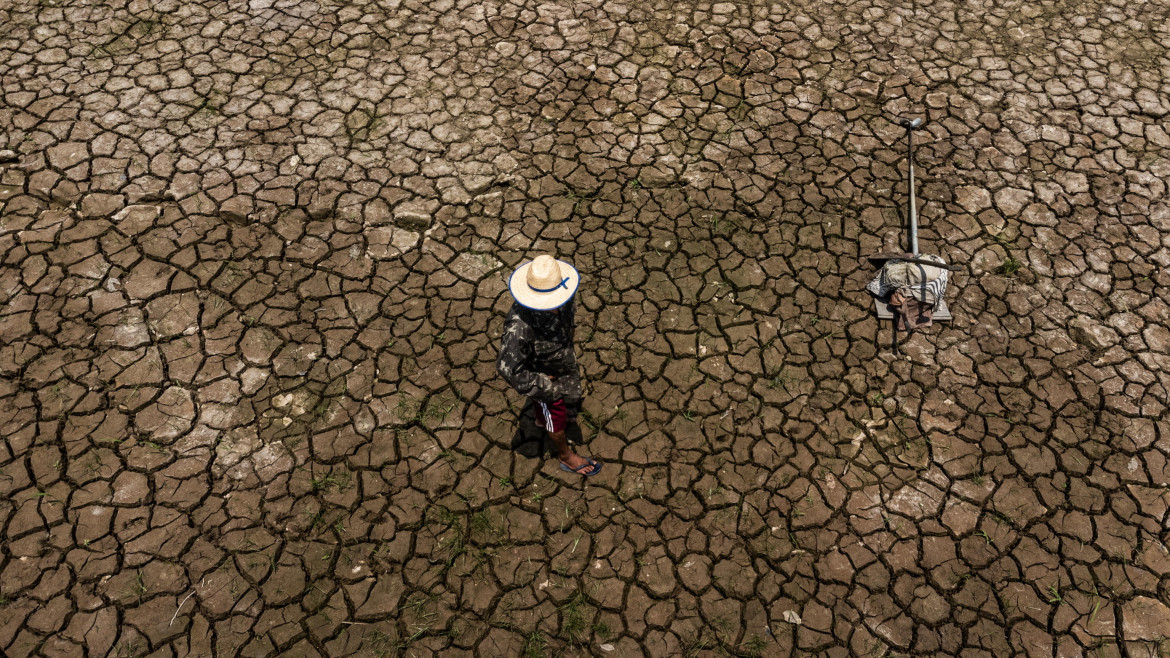Analysis
Manaus reaches its boiling point
If there is one region where one can see most clearly the effects of the boiling climate, it’s the Amazon, where the river is drying up and dolphins are dying.

It is called “o encontro das aguas” (“the meeting of the waters”), and it’s one of the main tourist attractions in Manaus: the confluence of the dark waters of the Rio Negro and the ochre-colored waters of the Rio Solimões (the upper tract of the Amazon), which, because of the difference in density, speed and temperature, flow majestically side by side for several kilometers without ever mixing. But now they don’t look so majestic anymore: the terrible drought that the Amazon region is suffering – a deadly combination of El Niño, the warming of the North Atlantic, and, looking at the broad picture, climate change – has altered this magnificent place as well, causing countless sandbars and stones to surface in the middle of the waters.
In Manaus, the Rio Negro is flowing at its lowest level in 121 years, while some stretches of the Rio Solimões, previously crossed by countless boats, have now become sandy deserts. In Lake Tefé, in the Médio Rio Solimões region, more than 140 Amazonian dolphins have died. Their deaths seem to have been caused, at least in part, by heat stress caused by water temperatures near 40 degrees Celsius, compared to a maximum average of 32 degrees. But rivers and igarapés, the small tributary streams of the Amazon River – whose level is dropping by 13-14 centimeters a day – are disappearing everywhere, dramatically transforming the Amazonian landscape.
It’s not the first time this has happened. Between 2015 and 2016, El Niño, the periodic climatic phenomenon linked to a strong warming of the waters of the tropical Pacific, had caused dramatic effects; but this time everything seems to be amplified, due on one hand to global warming and to deforestation and fires on the other (which are also favored by the drought). In September alone, 6,991 fires were recorded, the second-highest number ever (beaten only by the same period in 2022, with 8,659 fires).
Even worse: according to forecasts, the drought will not ease up until at least December (but more likely until early next year), when El Niño will peak. This will have devastating consequences for both aquatic and terrestrial fauna and flora. In short, if there is one region where one can see most clearly the effects of the “boiling climate,” it’s the Amazon.
This is an environmental, social and economic catastrophe all at once. In the state of Rondônia, the Santo Antônio hydroelectric power plant, the fourth largest in the country, had to suspend its operations – something that only ever happened once – because of the low flow of the Madeira River, which is 50 percent lower than the historical average. In 79 municipalities in Pará and Roraima, the drought has also affected areas used for agriculture and livestock, and a state of emergency has been declared since September 30 in 55 out of 62 municipalities in Amazonas state.
And, while hundreds of communities that lived off sustainable fishing of pirarucu and tambaqui have already lost their main source of livelihood, 35 large industrial plants in Manaus have sent 17,000 workers on furlough until November 4 due to the low navigability of Amazon rivers, which prevents the arrival of needed supplies. Even more, some 500,000 people are expected to be left without access to drinking water (as indigenous communities often use what little water they have to put out the fires), as well as food: not only because the large boats transporting food from Manaus to the interior of the state can no longer navigate the Solimões river, but also because the scarcity of resources is causing rising prices for various consumer goods.
In early October, Vice-President Geraldo Alckmin, who is also minister of Development, Industry, Trade and Services, traveled to Manaus in the company of Marina Silva and other ministers to work out appropriate measures to mitigate the impact of the drought, ensuring all the economic support needed by the local population. But in the meantime, the government is showing keen interest in the BR-319 resurfacing project, which intends to asphalt the road cutting through the forest connecting Manaus to Porto Velho. According to all environmental organizations, this would be yet another driving force for deforestation in the Amazon, with ruinous effects.
Originally published at https://ilmanifesto.it/lebollizione-di-manaus on 2015-10-08
